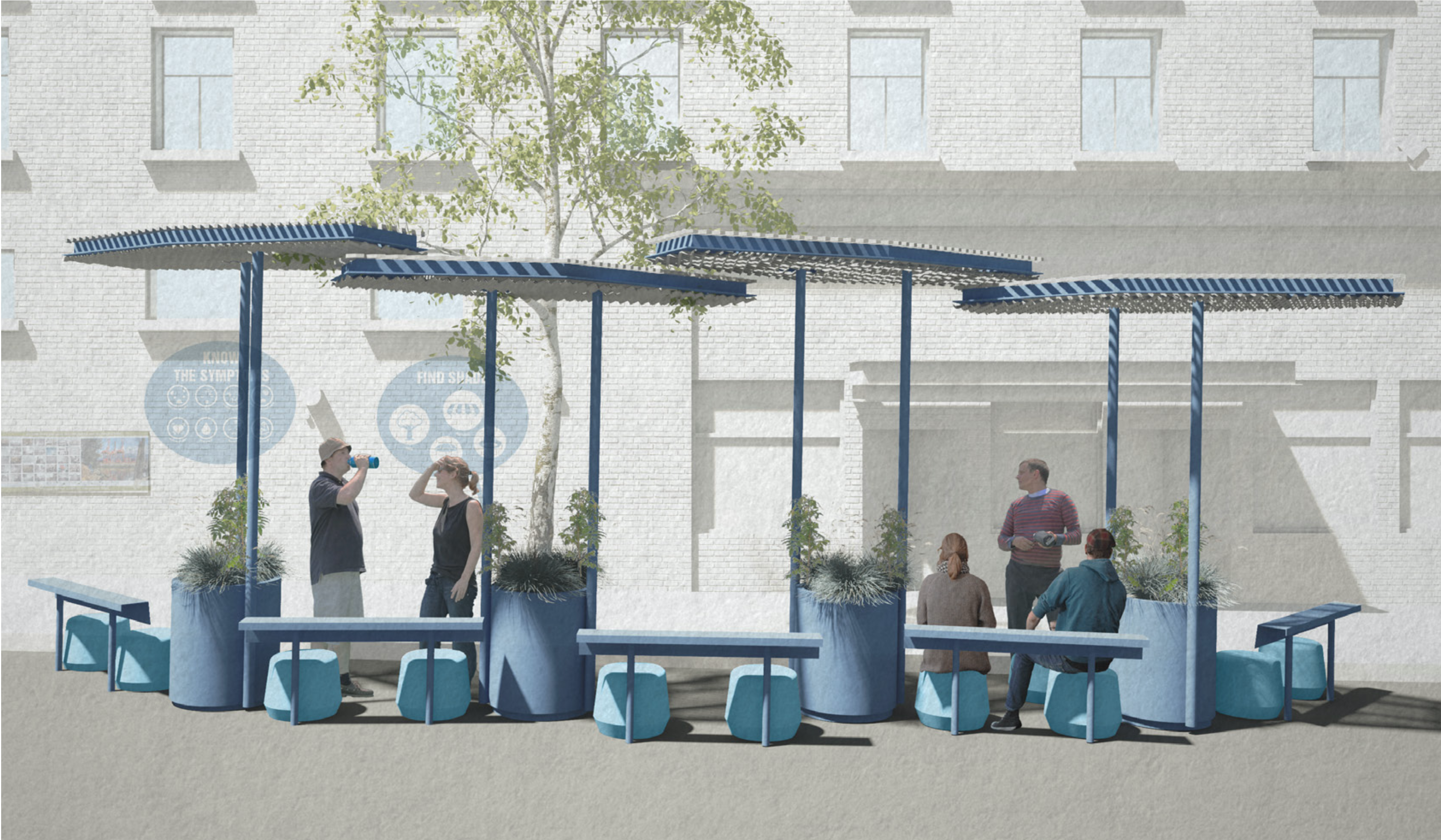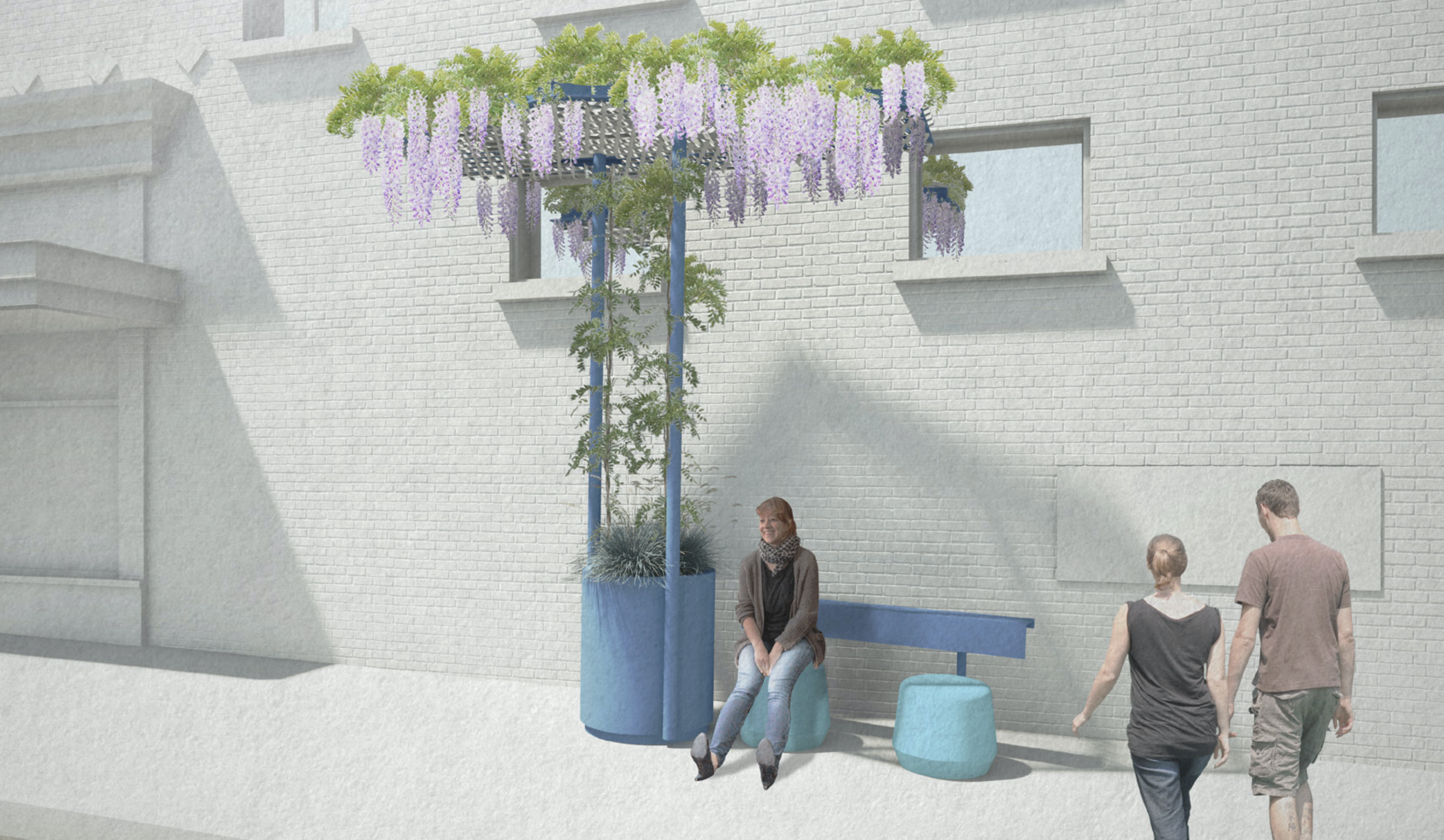

Cooling Stations
Location: Princess St. & Hastings St.
Type: Competition Proposal,
Year: 2016
Client: City of Vancouver
Type: Competition Proposal,
Year: 2016
Client: City of Vancouver
After conducting heat mapping during the summer months, it was discovered that several blocks of the City’s poorest district showed particularly high temperature spikes, due largely to the lack of urban tree canopies in these formerly industrial areas. This cooling station proposal was developed to respond to this condition.
Modeled on the design of a parklet, its principal purpose is to provide a cool, outdoor, social space where locals can hydrate and find shelter from the sun. During the summer pilot period, the planters with attached trellises would combine to form a continuous canopy, protecting the seating areas below. Afterward, the trellises and benches would find permanent locations throughout the neighbourhood, becoming “cooling satellites” where pedestrians can pause and rest in the shade. The next summer, a new cooling station would be built, and afterward, four new trellises would be permanently installed in the area. Very quickly, a network of cooling satellites would form, providing continuous refuge to local residents and patching the holes in the urban tree canopy that are the cause of the extreme heat in the first place.
